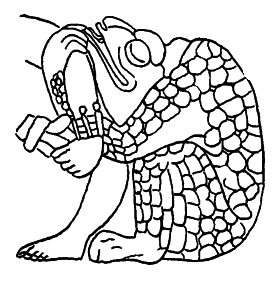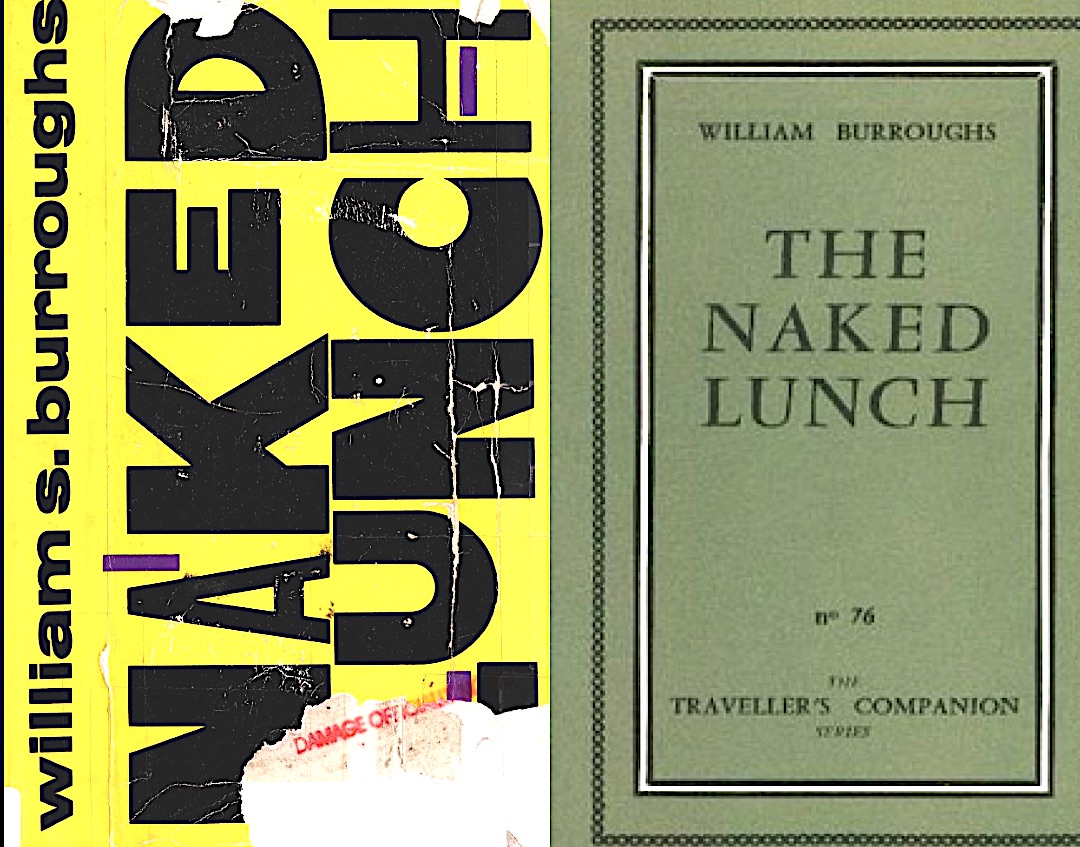文学における時空間
Chronotope of
Literary Works

文学における時空間
Chronotope of
Literary Works

"In literary theory and
philosophy of language, the chronotope is
how configurations of time and space are represented in language and
discourse. The term was taken up by Russian literary scholar M.M.
Bakhtin who used it as a central element in his theory of meaning in
language and literature. The term itself comes from the Russian
Хронотоп, which in turn is derived from the Greek χρόνος ('time') and
τόπος ('space'); it thus can be literally translated as "time-space."
Bakhtin developed the term in his 1937 essay "Forms of Time and of the
Chronotope in the Novel" (Формы времени и хронотопа в романе). Here
Bakhtin showed how different literary genres operated with different
configurations of time and space, which gave each genre its particular
narrative character. For example, the chronotopic frame of the epic
differed from that of the hero adventure or the comedy." - chronotope.
「文学が、歴史のなかの実在の時間・空間と、そのな かで自己を開示してゆく歴史的実在の人間とをみずからの ものとする過程は、複雑で断続的な道筋をたどってきた。しかも、文学がみずからのものとしてきたのは〔実在 の時間・空間のすべてではない〕。人類の発展の歴史の各段階で近づきうる、時間と空間の個々ばらばらな局面 である。それに対応して〔文学が〕つくり上げてきたのも、現実のうちからみずからのものとした局面を反映し 芸術的に精錬するのに適したジャンルの方法である。/ 文学がこのように芸術化してみずからのものとしてきた、時間的関係と空間的関係との本質的な相互連関を、 ここではクロノトポスと呼ぶ (「クロノトポス」とは、文字通りに訳せば「時空間」である)。これは、相対 性理論(アインシュタイン)を基盤にして導入され基礎づけられた用語で、今日数理的な自然科学において使わ れている用語である。しかし、われわれにとって重要なのは、この用語が相対性理論においてもつ専門的な意味 ではない。われわれは、この用語を、ほとんど比喩として文学研究の領域に移入する(ただし、ほとんど比喩と してであって、まったく比喩としてではない)。つまり、われわれにとって重要なのは、この用語のうちに、空 間と時間とは切り離しえないということが示されている(つまり、時間が空間の四次元として示されている) 点である。さらに、ここでは、時空間なるものを、文学の形式・内容上のカテゴリーと解してゆく(したがつて、 文学以外の他の文化の領域における時空間については、ここでは触れない)」(バフチン 2001:143-144)。
「文学における時空間の場合、空間的特徴と時間的特 徴とは、意味を付与された具体的な全体のなかで融合する。 時間は、凝縮されて密になり、芸術化され可視的になる。空間も、集約されて、時間•話の筋・歴史の展開のな かに引き込まれる。時間的特徴が、空間のなかでみずからを開示し、空間は、時間によって意味づけられ計測さ れる。文学における時空間を特徴づけるのは、両種の系列のこうした交差、双方の特徴のこうした融合である。 文学における時空間は、文学の各ジャンルを決定するうえで本質的な意義をもつ。なぜなら、文学の各ジャンル のあり様を決定するのも、一ジャンル内の各下位ジャンルを決定するのも、まぎれもなく時空間だ、と端的に いえるからである。もっとも文学の場合主導的な原理として働くのは、〔空間ではなく〕時間である。しかも、 時空間は、形式・内容上のカテゴリーとして、(相当程度)文学のなかの人間像をも決定する。文学のなかの人 間像は常に、本質的に時空間的である。/ すでに述べたように、文学が歴史のなかの実在の時空間をみずからのものとする過程は、複雑で切れ切れの道 をたどってきた。みずからのものとしたものも、所与の歴史的条件のなかで近づきうる、時空間の若干の一定の 側面であった。そこで、みずからのものとした実在の時空間を芸術化して反映する形式としても、それに見合っ た一定の形式〔ジャンルの形式〕のみがつくり出されてきた。それらのジャンルの形式も、当初は多産であった が、伝統によって強化されると、現実的に見るともはや多産で適切だという意義をまったくうしなった後にも、 文学の以後の展開過程のうちに執拗に存続してきた。そのため、文学のうちには、互いにまったく違う時代の現 象が同時に共存することになる。そこで、文学の歴史の道筋は、きわめて複雑なものとなる。/ 歴史詩学の概説を意図する本書では、いわゆる「ギリシア小説」から始まつてラブレーの小説でおわるヨーロ ッパ小説の、さまざまな下位ジャンルの展開を題材にして、この錯綜した文学の道筋を示してみたい。それは、 類型論的にみて、この時期につくり上げられた小説の時空間が持続力の強いものであり、その持続力の強さゆえ に、以後の時代の小説の若干の下位ジャンルにもあらかじめ一瞥をあたえることが可能になるからである。 われわれの理論的な定式や定義が正確で完璧だというつもりはない。芸術や文学における時間・空間の形式に かんする研究で信頼できる仕事は、国内でも国外でも、ようやく最近始まったばかりである。こうした信頼でき る仕事が今後進捗してゆくなら、本書で示した、小説の時空間にかんする特徴づけも、いずれはそれによって補 足され、おそらく、本質的な修正を加えられることになるであろう」(バフチン 2001:144-145)。
◎サイバースペースとしての文 学空間
もし小説の主人公たちが、作者や読者の認識範囲を超
えて、その主張を私たちに独自に訴えるポリフォニーの議論が可能だとしたら、なぜ、SNSでのコミュニケーションのやりとりで自死をも引き起こすサイバー
スペースでのアイデンティティ・ポリティクスもまたポリフォニー的あるいはオペラ的ドラマツルギーが「ある」と言っても差し支えない。
●裸のランチ(抄)——「ハイパーメ ディア」「ハイパーテキスト」
| Naked Lunch
(sometimes The Naked Lunch) is a 1959 novel by American writer William
S. Burroughs. The book is structured as a series of loosely connected
vignettes, intended by Burroughs to be read in any order.[1] The reader
follows the narration of junkie William Lee, who takes on various
aliases, from the U.S. to Mexico, eventually to Tangier and the
dreamlike Interzone. The vignettes (which Burroughs called "routines") are drawn from Burroughs' own experiences in these places and his addiction to drugs: heroin, morphine and, while in Tangier, majoun (a strong hashish confection), as well as a German opioid with the brand name Eukodol (oxycodone), of which he wrote frequently.[2] The novel was included in Time 's "100 Best English-language Novels from 1923 to 2005".[3] In 1991, David Cronenberg directed a film of the same name based on the novel and other Burroughs writings. |
『裸のランチ』(はだかのランチ)は、アメリカの作家ウィリアム・S・
バロウズによる1959年の小説である。本書は、バロウズがどのような順序でも読めるように意図した、ゆるやかにつながった一連のヴィネットとして構成さ
れている[1]。読者は、ジャンキーのウィリアム・リーの語りを追う。彼はさまざまな偽名を名乗り、アメリカからメキシコ、最終的にはタンジールと夢のよ
うなインターゾーンに至るまで、その旅を続ける。 バロウズが「ルーティン」と呼ぶこのヴィネットは、これらの場所でのバロウズ自身の体験と、ヘロイン、モルヒネ、そしてタンジールにいたときにはマジョー ン(強いハシシの菓子)、さらに彼が頻繁に書いていたユーコドール(オキシコドン)という商品名のドイツのオピオイドに依存したことから描かれています [2]。 1991年、デヴィッド・クローネンバーグがこの小説とバロウズの他の著作を基にした同名の映画を監督した[3]。 |
| Title origin The book was originally published with the title The Naked Lunch in Paris in July 1959 by Olympia Press. Because of US obscenity laws,[4] a complete American edition (by Grove Press) did not follow until 1962. It was titled Naked Lunch and was substantially different from the Olympia Press edition because it was based on an earlier 1958 manuscript in Allen Ginsberg's possession.[5] The definite article "the" in the title was never intended by the author, but added by the editors of the Olympia Press 1959 edition.[6] Nonetheless The Naked Lunch remained the title used for the 1968 and 1974 Corgi Books editions, and the novel is often known by the alternative name, especially in the UK where these editions circulated. Burroughs wrote in his introduction that Jack Kerouac suggested the title. "The title means exactly what the words say: naked lunch, a frozen moment when everyone sees what is on the end of every fork."[7] In a June 1960 letter to Allen Ginsberg, Kerouac wrote that he was pleased that Burroughs had credited him with the title, writing that Ginsberg misread "Naked Lust" from the manuscript, and only he noticed. Kerouac did not specify which manuscript, and critics could only speculate until 2003 when Burroughs scholar Oliver Harris established that, in his Lower East Side apartment in fall 1953, Ginsberg had been reading aloud to Kerouac from the manuscript of Queer, which Burroughs had just brought with him from Mexico City.[8] For the next five years, Burroughs used the title to refer to a three-part work made up of "Junk", "Queer" and "Yage", corresponding to his first three manuscripts, before it came to describe the book later published as Naked Lunch, which was based largely on his 1957 "Interzone" manuscript. Editions Upon publication, Grove Press added to the book supplementary material regarding the censorship battle as well as an article written by Burroughs on the topic of drug addiction. In 2001, a "restored text" edition of Naked Lunch was published with some new and previously suppressed material added. |
タイトルの由来 本書は、1959年7月にオリンピア出版社から『The Naked Lunch in Paris』というタイトルで出版されたのが始まりである。アメリカの猥褻法のため[4]、完全なアメリカ版(グローブプレス社)は1962年まで続かな かった。タイトルは『裸のランチ』で、アレン・ギンズバーグが所有していた1958年の原稿を基にしたため、オリンピアプレス版とは大幅に異なる[5]。 タイトルの定冠詞「the」は著者が意図したものではなく、オリンピアプレス1959年版の編集者が付け加えたものである[6]。 バロウズは序文で、ジャック・ケルアックがこのタイトルを提案したと書いている。「タイトルが意味するのは、まさにその言葉通り、裸の昼食、すべての フォークの先にあるものを誰もが目にする凍りついた瞬間である」[7]。 1960年6月のアレン・ギンズバーグへの手紙の中で、ケルアックはバロウズがタイトルを自分にクレジットしたことを喜んでいると書き、ギンズバーグが原 稿から「Naked Lust」を誤読し、自分だけが気がついたと書いている。バロウズ研究者のオリバー・ハリスが、1953年秋にローワーイーストサイドのアパートで、ギン ズバーグがバロウズがメキシコシティから持ってきたばかりの『Queer』の原稿をケルアックに読み聞かせていたことを立証するまで、ケルアックはどの原 稿か特定せず、評論家たちは推測するしかなかった[8]。 [その後5年間、バロウズはこのタイトルを、彼の最初の3つの原稿に対応する「ジャンク」、「クィア」、「ヤージュ」からなる3部作を指すのに使用し、後 に1957年の「インターゾーン」の原稿を主体として出版された「裸のランチ」を表すようになる。 エディション 出版にあたり、グローブ・プレスは検閲の戦いに関する補足資料と、バロウズが書いた薬物依存症に関する記事を追加した。2001年、『裸のランチ』の「復 元版」が出版され、新しい資料や以前は掲載されていなかった資料が追加された。 |
 Plot summary Plot summaryNaked Lunch is a non-linear narrative without a clear plot. The following is a summary of some of the events in the book that could be considered the most relevant. The book begins with the adventures of William Lee (also known as "Lee the Agent"), who is Burroughs' alter ego in the novel. His journey starts in the U.S. where he is fleeing the police in search of his next fix. There are short chapters describing the different characters he travels with and meets along the way. Eventually he gets to Mexico where he is assigned to Dr. Benway; for what, he is not told. Benway appears and he tells about his previous doings in Annexia as a "Total Demoralizator." The story then moves to a state called Freeland, a form of limbo, where we learn of Islam Inc. Here, some new characters are introduced, such as Clem, Carl, and Joselito. A short section then jumps in space and time to a marketplace. The Black Meat is sold here and compared to "junk", i.e. heroin. The action then moves back to the hospital where Benway is fully revealed as a manipulative sadist. Time and space again shift the narrative to a location known as Interzone. Hassan, one of the notable characters of the book and "a notorious liquefactionist", is throwing a violent orgy. AJ crashes the party and wreaks havoc, decapitating people and imitating a pirate. Hassan is enraged and tells AJ never to return, calling him a "factualist bitch," a term which is enlarged much later when the apparently "clashing" political factions within Interzone are described. These include the Liquefactionists, the Senders, the Factualists, and the Divisionists (who occupy "a midway position"). A short descriptive section tells of Interzone University, where a professor and his students are ridiculed; the book moves on to an orgy that AJ throws. The book then shifts back to the market place and a description of the totalitarian government of Annexia. Characters including the County Clerk, Benway, Dr. Berger, Clem and Jody are sketched through heavy dialogue and their own sub-stories. After the description of the four parties of Interzone, we are told more stories about AJ. After briefly describing Interzone, the novel breaks into sub-stories and heavily cut-up influenced passages. In a sudden return to what seems to be Lee's reality, two police officers, Hauser and O'Brien, catch up with Lee, who kills both of them. Lee then goes out to a street phone booth and calls the Narcotics Squad, saying he wants to speak to O'Brien. A Lieutenant Gonzales on the other end of the line claims there's no one in their records called O'Brien. When Lee asks for Hauser instead, the reply is identical; Lee hangs up, and goes on the run once again. The book then becomes increasingly disjointed and impressionistic, and finally simply stops. |
 プロットの概要 プロットの概要『裸のランチ』は明確なプロットのない、非線形の物語である。以下は、本書の中で最も関連性が高いと考えられるいくつかの出来事の要約である。 本書は、小説の中でバロウズの分身であるウィリアム・リー(「リー・ザ・エージェント」とも呼ばれる)の冒険から始まる。彼の旅は、次の獲物を求めて警察 から逃げているアメリカから始まる。この小説では、彼が旅先で出会ったさまざまな人物が短い章立てで描かれている。 やがてメキシコにたどり着いた彼は、ベンウェイ博士のもとに身を寄せることになるが、その理由は語られない。ベンウェイが現れ、彼はアネクシアでの "Total Demoralizator "としてのこれまでの行いを話す。そして、物語はフリーランドと呼ばれるリンボ状態に移り、そこでイスラム社の存在を知ることになる。ここで、クレム、 カール、ホセリートといった新キャラクターが登場する。 その後、短いセクションで時空を飛び越え、ある市場へと移動する。ここでは「ブラック・ミート」が売られ、「ジャンク」、つまりヘロインと比較される。そ して舞台は病院に戻り、ベンウェイがサディストであることが完全に明らかになる。 時間と空間は、再び物語をインターゾーンと呼ばれる場所に移す。この本の注目すべき登場人物の一人で、「悪名高い液化主義者」であるハッサンは、暴力的な 乱交パーティーを開いている。AJはパーティに乱入し、人々の首を切り、海賊の真似をして大混乱に陥れる。ハッサンは激怒し、AJに二度と戻ってくるなと 言い、彼を「事実主義者の女」と呼ぶ。この言葉は、ずっと後になって、インターゾーン内の明らかに「衝突」している政治派閥が描写されるときに拡大解釈さ れる。液化主義者、送出主義者、事実主義者、そして「中間的な位置」を占める分裂主義者である。インターゾーン大学では、教授と学生が嘲笑され、AJが開 いた乱交パーティーの様子が描かれた短い記述の部分がある。 その後、再び市場に戻り、アネクシアの全体主義的な政府について描かれる。郡書記、ベンウェイ、ベルガー博士、クレム、ジョディなどの登場人物が、重い台 詞とそれぞれのサブストーリーによってスケッチされる。 インターゾーンの4者の描写の後、AJの話がさらに語られる。インターゾーンを簡単に説明した後、小説はサブストーリーと大きくカットアップされた影響の ある文章に分かれる。 突然リーの現実と思われる場所に戻り、ハウザーとオブライエンという二人の警察官がリーに追いつき、リーは二人を殺してしまう。そしてリーは街頭の電話 ボックスに出て、オブライエンと話したいと言って麻薬班に電話をかける。電話口のゴンザレス警部補は、オブライエンという人物は記録にないと言う。リーが ハウザーを呼んでも、同じ答えが返ってくる。この本は、その後ますます支離滅裂で印象派的なものになり、最後にはただ止まってしまう。 |
| Literary significance and
reception Naked Lunch is considered Burroughs' seminal work. Extremely controversial in both its subject matter and its use of obscene language (something Burroughs recognized and intended), the book was banned in Boston and Los Angeles in the United States,[9][10] and several European publishers were harassed.[11] It was one of the more recent American books over which an obscenity trial has been held. The book was banned in Boston in 1962 due to obscenity (notably child murder and acts of pedophilia), making it among the last works to be banned in that city, but that decision was reversed in 1966 by the Massachusetts Supreme Judicial Court.[12] The Appeals Court found the book did not violate obscenity statutes, as it was found to have some social value. The hearing included testimony in support of the work by Allen Ginsberg and Norman Mailer.[13] Sections of the manuscript were published in the Spring 1958 edition of Robert Creeley's Black Mountain Review[14] and in the Spring 1958 edition of the University of Chicago student-run publication Chicago Review. The student edition was not well received, and caused the university administration to discuss the future censorship of the Winter 1959 edition of the publication, resulting in the resignation of all but one of the editors.[15] When the editor Paul Carroll published BIG TABLE Magazine (Issue No. 1, Spring 1959)[16] alongside former Chicago Review editor Irving Rosenthal, he was found guilty of sending obscene material through the U.S. mail for including "Ten Episodes from Naked Lunch", a piece of writing the Judicial Officer for the United States Post Office Department deemed "undisciplined prose, far more akin to the early work of experimental adolescents than to anything of literary merit" and initially judged it as non-mailable under the provisions of 18 U.S.C. § 1461.[17] On a more specific level, Naked Lunch also protests the death penalty. In Burroughs's "Deposition: A Testimony Concerning A Sickness", "The Blue Movies" (appearing in the vignette "A.J.'s Annual Party") is deemed "a tract against capital punishment." Fans of Beat Generation literature, Donald Fagen and Walter Becker named their band Steely Dan after a "revolutionary" steam-powered dildo mentioned in the novel.[18][19][20] |
文学的意義と受容 裸のランチ』はバロウズの代表作とされている。その題材と卑猥な言葉の使用(バロウズはそれを認識し意図していた)の両方において極めて物議を醸し、この 本はアメリカのボストンとロサンゼルスで発禁となり[9][10]、いくつかのヨーロッパの出版社は嫌がらせを受けた。 11] 猥褻裁判が行われた最近のアメリカの本の一つであった。 1962年にボストンでわいせつ行為(特に児童殺傷と小児性愛行為)のため発禁となり、同市で発禁となった最後の作品の一つとなったが、その決定は 1966年にマサチューセッツ州最高司法裁判所によって覆された[12]。 控訴裁判所は、この本はある程度の社会的価値があると認められ、猥褻法に違反しないことが判明した。審理ではアレン・ギンズバーグとノーマン・メイラーに よる作品を支持する証言が行われた[13]。 原稿の一部はロバート・クリーリーの『ブラック・マウンテン・レビュー』1958年春号[14]とシカゴ大学の学生が運営する『シカゴ・レビュー』 1958年春号で発表された。学生版は評判が悪く、大学当局が1959年冬号の今後の検閲について議論し、編集者のうち1人を除いて全員が辞任することに なった[15]。編集者のポール・キャロルが『BIG TABLE Magazine』(第1号、1959年春号)を元シカゴレビュー編集者のアーヴィン・ローゼンタールと一緒に出版した際[16]、「Ten Ep. 裸のランチの10のエピソード "を含んでいたことで、アメリカの郵便局の司法担当官は、"文学的価値のあるものよりも実験的青年の初期の作品にはるかに近い、規律に欠ける散文 "と判断し、18 U.S.C. § 1461の規定に基づいて郵便不可のものとして最初に判断している[17]。 より具体的なレベルでは、『裸のランチ』はまた死刑制度に抗議している。バロウズの「宣誓供述書」において。A Testimony Concerning A Sickness" の中で、"The Blue Movies" (ヴィネット "A.J.'s Annual Party" に登場)は "a tract against capital punishment" と見なされている。 ビート・ジェネレーション文学のファンであるドナルド・フェイゲンとウォルター・ベッカーは、自分たちのバンドの名前を、小説に登場する「革命的な」蒸気 駆動のディルドにちなんでスティーリー・ダンと名づけた[18][19][20]。 |
| Film adaptation From the 1960s, numerous film-makers considered adapting Naked Lunch for the screen. Antony Balch, who worked with Burroughs on a number of short film projects in 1960s, considered making a musical with Mick Jagger in the lead role, but the project fell through when relationships soured between Balch and Jagger.[21][22] Burroughs himself adapted his book for the never-made film; after Jagger dropped out, Dennis Hopper was considered for the lead role, and at one point game-show producer Chuck Barris was considered a possible financier of the project.[23] In May 1991, rather than attempting a straight adaptation, Canadian director David Cronenberg took a few elements from the book and combined them with elements of Burroughs' life, creating a hybrid film about the writing of the book rather than the book itself. Peter Weller starred as William Lee, the pseudonym Burroughs used when he wrote Junkie. |
映画化 1960年代から、多くの映画人が『裸のランチ』の映画化を検討した。1960年代にバロウズと多くの短編映画プロジェクトで仕事をしたアントニー・バル チは、ミック・ジャガーを主役にしたミュージカルを作ることを考えたが、バルチとジャガーの関係が悪化したため、プロジェクトは挫折した[21][22] バロウズ自身が彼の本を映画化したが、作られなかった。ジャガーの脱退後、主役にはデニス・ホッパーが考えられ、一時はゲームショーのプロデューサー、 チャック・バリスがプロジェクトの資金提供者として考えられていた[23]......。 1991年5月、カナダの監督デヴィッド・クローネンバーグは、ストレートな映画化を試みるのではなく、本からいくつかの要素を取り上げ、それらをバロウ ズの人生の要素と組み合わせ、本自体というよりも本の執筆についてのハイブリッド映画を作り上げた。ピーター・ウェラーが、バロウズが『ジャンキー』を書 いたときに使ったペンネーム、ウィリアム・リー役で出演している。 |
| Bibliography Burroughs, William S. (1992). Naked Lunch. Grove Atlantic. ISBN 0-8021-3295-2. Burroughs, William S. (2001). Grauerholtz, James; Miles, Barry (eds.). Naked Lunch (the restored text ed.). Grove Press. ISBN 0-8021-4018-1. Naked Lunch@50: Anniversary Essays, edited by Oliver Harris and Ian MacFadyen (Carbondale, Il: Southern Illinois University Press, 2009). |
|
| https://en.wikipedia.org/wiki/Naked_Lunch |
リンク
文献
その他の情報
Copyleft, CC, Mitzub'ixi Quq Chi'j, 1996-2099
☆
 ☆
☆